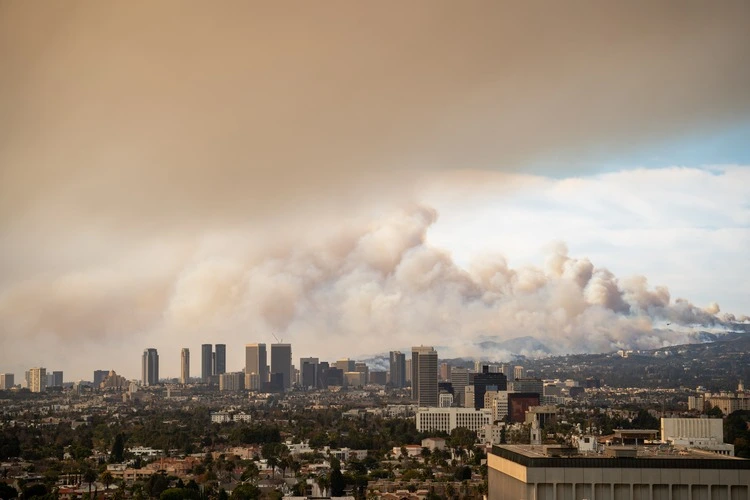
For the second time, Trump pulled the US from the Paris Agreement – what impact will it have on America and the rest of the world?
By
Within the first few hours following Trump’s inauguration – and against the backdrop of the news that 2024 was the hottest year on record – the US president signed an executive order to quit the ‘unfair, one-sided Paris climate accord rip off.’
Once formalised, the country will join three others – Iran, Libya and Yemen – as being outside of the international pact created back in 2017 to lower greenhouse gas emissions and halt global warming below 1.5C above pre-industrial levels.
Trump has expressed in no uncertain terms his opinions on climate change time and time again. Last November, he remarked that climate change is ‘all a big hoax’, and in a campaign appearance told an audience ‘We don’t have a global warming problem.’
Ultimately, Trump’s move to leave the Paris agreement is not an unprecedented one: many predicted the president would reverse Biden’s decision to rejoin the climate agreement back in 2021, a decision only made because Trump pulled the US out of Paris agreement during his last presidency too.
Enjoying this article? Check out our related reads:
Due to stipulations of the agreement back then, there was a large gap of three years – from 2017 to 2020 – while the US had to wait for the withdrawal to be formally recognised. All in all, the country was only out of the agreement for 107 days, before Biden rejoined it following the Democrat Party’s election win.
Now Trump has signed the executive order, there is just a one year notice period required for the US to officially withdraw from the global agreement again, meaning it could soon be out.
So, what can the world’s second-largest emitter – responsible for 50 per cent of CO2 emissions in the atmosphere since 1950 – expect after leaving the Paris accord?
Shifting dynamics
In the last year alone, the US has seen numerous examples of extreme weather events. From devastating wildfires tearing through Los Angeles earlier this month, to the impacts of Hurricane Milton and Helen back in 2024, these events illustrate the ‘ample evidence that climate change is a reality impacting the US itself’, says CSIC researcher and associate professor at the Universidad Rey Juan Carlos de Madrid Fernando Valladares.
Giving up on the Paris agreement means that the US loses its ability to be part of major international conversations aimed at reducing emissions, not only in its own country, but other major polluters like China, India and the European Union.

Since the agreement also seeks to address the loss and damage from the effects of climate change, leaving the accord may also put the US in a precarious situation without international support from the Paris Agreement, as it faces the impacts of a warming planet.
Additionally, if the second-largest emitter pulls out, some raise concerns that such a shift in dynamics may undermine the resolve and ambition of other countries to follow through with climate actions and goals created under the Paris Agreement. In other words, the US leaving the accord is not just a US issue; it may well have ripple effects for those nations who are still parties.
The clean energy ‘boom’
Along with signing an executive order to leave the Paris Agreement, Trump has also now temporarily suspended new federal offshore wind lease sales and paused issuing approvals, permits and loans for onshore and offshore wind projects.
Trump’s mantra of ‘drill, baby, drill’ will likely see the US continue its position of producing record amounts of oil, as it did under the Biden presidency. It’s currently the world’s biggest gas producer, with a record-breaking 758 oil and gas drilling licenses issued in the last year alone.
Despite the likely trajectory ahead for the US – one that deviates from the Paris Agreement’s focus to limit greenhouse gas emissions – it is undeniable that renewable energy is a major and ever-growing sector around the world. Economically, the US exiting the agreement may be an unfavourable decision in the long term as clean energy continues to rise in popularity.

Gina McCarthy, former White House climate adviser under President Joe Biden, explains how clean energy offers beneficial impacts for the US. According to McCarthy, if Trump ‘truly wants America to lead the global economy, become energy independent and create good-paying American jobs,’ he must ‘stay focused on growing our clean energy industry. Clean technologies are driving down energy costs for people all across our country.’
Amid its exit from the Paris Agreement, the US may choose to bow out of the industry and turn its attention to oil, gas and coal, but that leaves room for other major economies, such as China, to potentially fill the gap. Already, the nation is the world’s largest market for electric vehicles, selling 6.8 million in 2022 – a number which eclipses America’s sale of around 800,000 in the same year.
Leaving the Paris Agreement may, therefore, make a much more difficult future for the US if it eventually desires to have a clear stake in the clean energy race.
The future ahead
Although the US may be moving out of the Paris Agreement, that doesn’t mean that everyone is on the same page in terms of climate action.
More than 5,000 state and local leaders in the US have pledged to uphold the goals of the Paris Agreement, collectively representing 63 per cent of the US population. Governors representing around 55 per cent of the US’s total population across 24 states and territories have also pledged to ensure a net-zero future for the US.
Even when considering the actual US population, only two in 10 say they are either ‘somewhat’ or ‘strongly’ in favour of leaving the Paris Agreement. Approximately 50 per cent oppose leaving the agreement entirely. This offers a note of optimism for critics of Trump’s decision to leave: inroads to reduce global greenhouse gas emissions can still be made, albeit on a smaller and less collaborative scale than the Paris Agreement can offer.
Before Trump’s win in the November 2024 elections, UN Secretary-General António Guterres spoke of concerns about the US leaving the Paris Agreement for a second time. ‘The Paris Agreement can survive, but people sometimes can lose important organs or lose the legs and survive.’
‘But we don’t want a crippled Paris Agreement. We want a real Paris Agreement.’
Only time will tell the implications that the US leaving the Paris Agreement will have on the international treaty, and the ways in which the US may be affected. Still, if the exit goes through, that leaves 194 countries left to collaborate under the accord to combat climate change.




